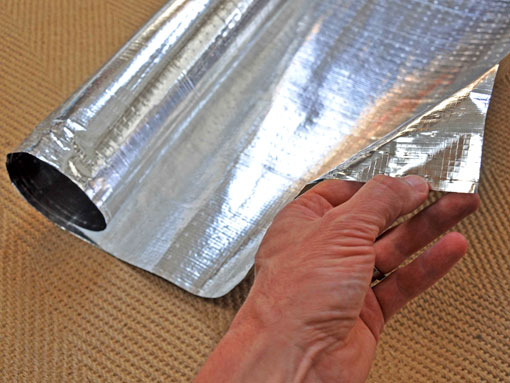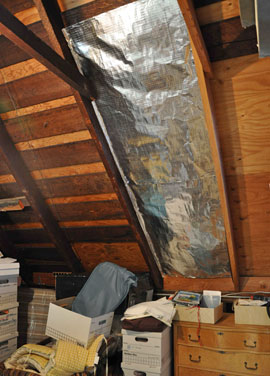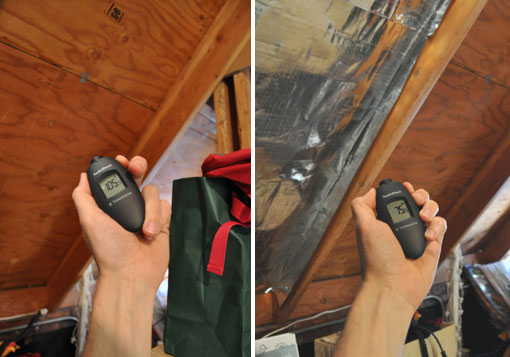Tech Note: Radiant Barriers
March 5th, 2010I’m always looking for “no-brainers” in construction — things to do that just make too much sense not to do. Here’s my experience with radiant barrier:
Radiant barrier is a heavy-duty aluminum foil that reflects 97% of the infra-red spectrum. It’s available on the underside of plywood roof sheathing for new construction, or in rolls for retrofits.

A fiber-reinforced radiant barrier, 48" wide roll.

Barrier stapled in rafter bay about 3/4" below sheathing.
Rolls can be stapled between existing rafters, an inch or so down from the underside of the sheathing. No taping is needed (unless you’re trying to make an air or vapor barrier as well). This 4′ x 250′ roll is the perforated “Ultima” type from radiantguard.com – about $150 including shipping.
I stapled up the first couple pieces in the morning of a very sunny, 78° day, on this east-facing 12:12 roof. The infra-red thermometer shows a 30° difference in temperature by 10:30am.

East-facing 45° roof at 10:30am. Outside temperature was 78°.
Heat will also enter your attic by convecting off the underside of the sheathing, as well as by radiation, so a layer of insulation with air barrier below would complete this cathedral-ceiling job. But the radiant barrier alone would take a load off an uninhabited attic with ceiling insulation below.
In this application I’ve got a ridge vent. Intake vents lower would help. Either way, the increase in roof surface temperature with the installation of radiant barrier is only 3° – so little that composite shingle manufacturers have said installing the barrier would not void their warranties.









